Jianqing Li
Structure Disruption: Subverting Malicious Diffusion-Based Inpainting via Self-Attention Query Perturbation
May 26, 2025Abstract:The rapid advancement of diffusion models has enhanced their image inpainting and editing capabilities but also introduced significant societal risks. Adversaries can exploit user images from social media to generate misleading or harmful content. While adversarial perturbations can disrupt inpainting, global perturbation-based methods fail in mask-guided editing tasks due to spatial constraints. To address these challenges, we propose Structure Disruption Attack (SDA), a powerful protection framework for safeguarding sensitive image regions against inpainting-based editing. Building upon the contour-focused nature of self-attention mechanisms of diffusion models, SDA optimizes perturbations by disrupting queries in self-attention during the initial denoising step to destroy the contour generation process. This targeted interference directly disrupts the structural generation capability of diffusion models, effectively preventing them from producing coherent images. We validate our motivation through visualization techniques and extensive experiments on public datasets, demonstrating that SDA achieves state-of-the-art (SOTA) protection performance while maintaining strong robustness.
OnSiteVRU: A High-Resolution Trajectory Dataset for High-Density Vulnerable Road Users
Mar 30, 2025Abstract:With the acceleration of urbanization and the growth of transportation demands, the safety of vulnerable road users (VRUs, such as pedestrians and cyclists) in mixed traffic flows has become increasingly prominent, necessitating high-precision and diverse trajectory data to support the development and optimization of autonomous driving systems. However, existing datasets fall short in capturing the diversity and dynamics of VRU behaviors, making it difficult to meet the research demands of complex traffic environments. To address this gap, this study developed the OnSiteVRU datasets, which cover a variety of scenarios, including intersections, road segments, and urban villages. These datasets provide trajectory data for motor vehicles, electric bicycles, and human-powered bicycles, totaling approximately 17,429 trajectories with a precision of 0.04 seconds. The datasets integrate both aerial-view natural driving data and onboard real-time dynamic detection data, along with environmental information such as traffic signals, obstacles, and real-time maps, enabling a comprehensive reconstruction of interaction events. The results demonstrate that VRU\_Data outperforms traditional datasets in terms of VRU density and scene coverage, offering a more comprehensive representation of VRU behavioral characteristics. This provides critical support for traffic flow modeling, trajectory prediction, and autonomous driving virtual testing. The dataset is publicly available for download at: https://www.kaggle.com/datasets/zcyan2/mixed-traffic-trajectory-dataset-in-from-shanghai.
AdaSin: Enhancing Hard Sample Metrics with Dual Adaptive Penalty for Face Recognition
Mar 05, 2025Abstract:In recent years, the emergence of deep convolutional neural networks has positioned face recognition as a prominent research focus in computer vision. Traditional loss functions, such as margin-based, hard-sample mining-based, and hybrid approaches, have achieved notable performance improvements, with some leveraging curriculum learning to optimize training. However, these methods often fall short in effectively quantifying the difficulty of hard samples. To address this, we propose Adaptive Sine (AdaSin) loss function, which introduces the sine of the angle between a sample's embedding feature and its ground-truth class center as a novel difficulty metric. This metric enables precise and effective penalization of hard samples. By incorporating curriculum learning, the model dynamically adjusts classification boundaries across different training stages. Unlike previous adaptive-margin loss functions, AdaSin introduce a dual adaptive penalty, applied to both the positive and negative cosine similarities of hard samples. This design imposes stronger constraints, enhancing intra-class compactness and inter-class separability. The combination of the dual adaptive penalty and curriculum learning is guided by a well-designed difficulty metric. It enables the model to focus more effectively on hard samples in later training stages, and lead to the extraction of highly discriminative face features. Extensive experiments across eight benchmarks demonstrate that AdaSin achieves superior accuracy compared to other state-of-the-art methods.
RVAFM: Re-parameterizing Vertical Attention Fusion Module for Handwritten Paragraph Text Recognition
Mar 05, 2025



Abstract:Handwritten Paragraph Text Recognition (HPTR) is a challenging task in Computer Vision, requiring the transformation of a paragraph text image, rich in handwritten text, into text encoding sequences. One of the most advanced models for this task is Vertical Attention Network (VAN), which utilizes a Vertical Attention Module (VAM) to implicitly segment paragraph text images into text lines, thereby reducing the difficulty of the recognition task. However, from a network structure perspective, VAM is a single-branch module, which is less effective in learning compared to multi-branch modules. In this paper, we propose a new module, named Re-parameterizing Vertical Attention Fusion Module (RVAFM), which incorporates structural re-parameterization techniques. RVAFM decouples the structure of the module during training and inference stages. During training, it uses a multi-branch structure for more effective learning, and during inference, it uses a single-branch structure for faster processing. The features learned by the multi-branch structure are fused into the single-branch structure through a special fusion method named Re-parameterization Fusion (RF) without any loss of information. As a result, we achieve a Character Error Rate (CER) of 4.44% and a Word Error Rate (WER) of 14.37% on the IAM paragraph-level test set. Additionally, the inference speed is slightly faster than VAN.
Feedback Design with VQ-VAE for Robust Precoding in Multi-User FDD Systems
Aug 08, 2024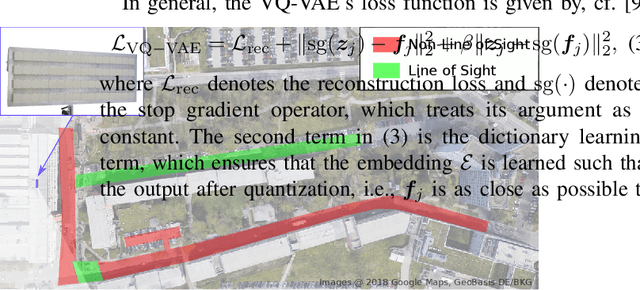

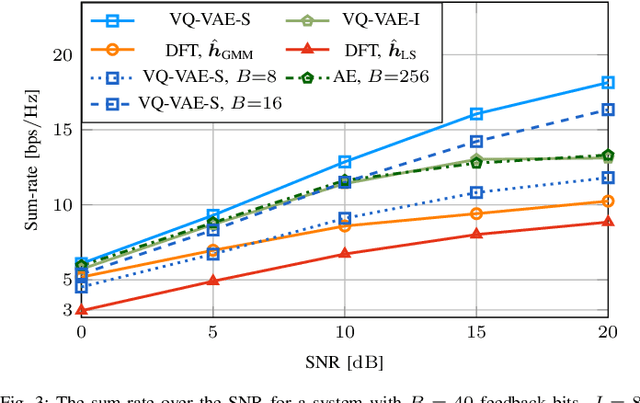
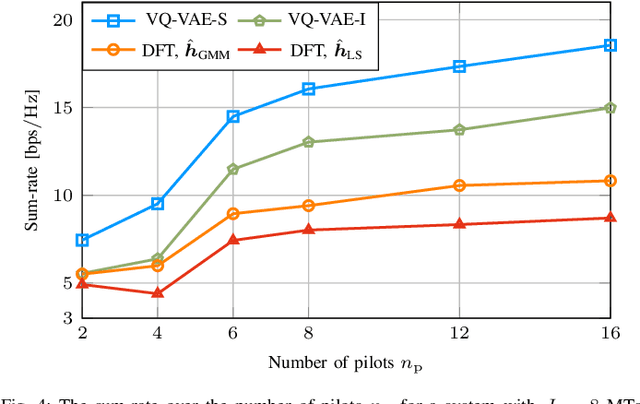
Abstract:In this letter, we propose a vector quantized-variational autoencoder (VQ-VAE)-based feedback scheme for robust precoder design in multi-user frequency division duplex (FDD) systems. We demonstrate how the VQ-VAE can be tailored to specific propagation environments, focusing on systems with low pilot overhead, which is crucial in massive multiple-input multiple-output (MIMO). Extensive simulations with real-world measurement data show that our proposed feedback scheme outperforms state-of-the-art autoencoder (AE)-based compression schemes and conventional Discrete Fourier transform (DFT) codebook-based schemes. These improvements enable the deployment of systems with fewer feedback bits or pilots.
Graph Convolutional Network with Connectivity Uncertainty for EEG-based Emotion Recognition
Oct 22, 2023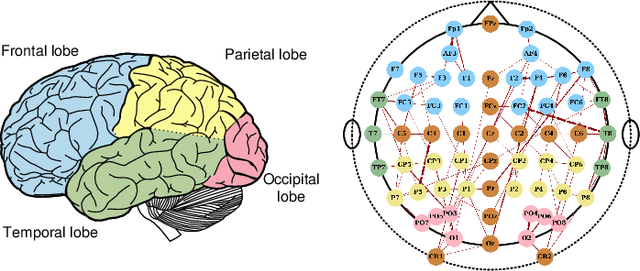
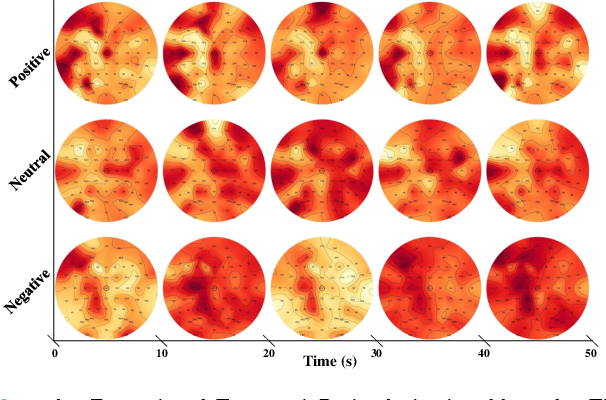
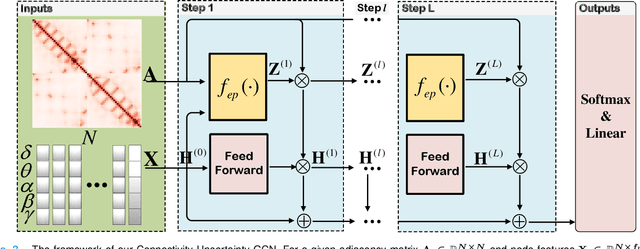

Abstract:Automatic emotion recognition based on multichannel Electroencephalography (EEG) holds great potential in advancing human-computer interaction. However, several significant challenges persist in existing research on algorithmic emotion recognition. These challenges include the need for a robust model to effectively learn discriminative node attributes over long paths, the exploration of ambiguous topological information in EEG channels and effective frequency bands, and the mapping between intrinsic data qualities and provided labels. To address these challenges, this study introduces the distribution-based uncertainty method to represent spatial dependencies and temporal-spectral relativeness in EEG signals based on Graph Convolutional Network (GCN) architecture that adaptively assigns weights to functional aggregate node features, enabling effective long-path capturing while mitigating over-smoothing phenomena. Moreover, the graph mixup technique is employed to enhance latent connected edges and mitigate noisy label issues. Furthermore, we integrate the uncertainty learning method with deep GCN weights in a one-way learning fashion, termed Connectivity Uncertainty GCN (CU-GCN). We evaluate our approach on two widely used datasets, namely SEED and SEEDIV, for emotion recognition tasks. The experimental results demonstrate the superiority of our methodology over previous methods, yielding positive and significant improvements. Ablation studies confirm the substantial contributions of each component to the overall performance.
ECG-CL: A Comprehensive Electrocardiogram Interpretation Method Based on Continual Learning
Apr 10, 2023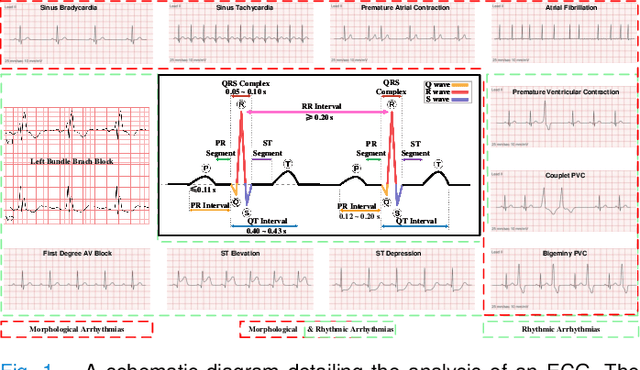
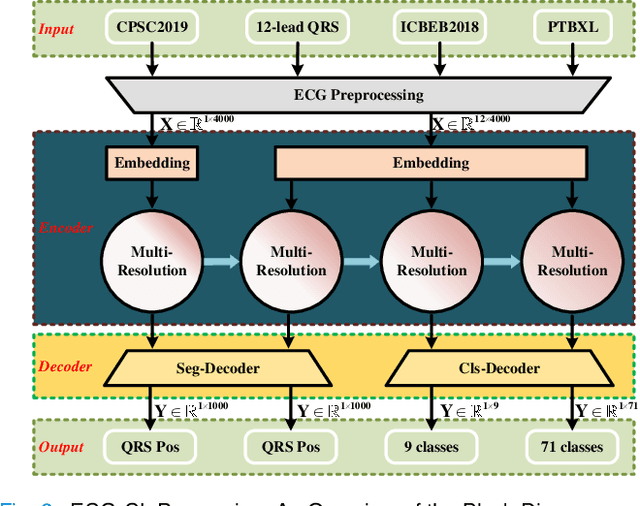
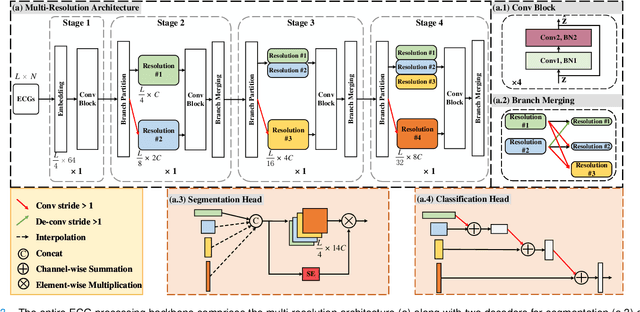
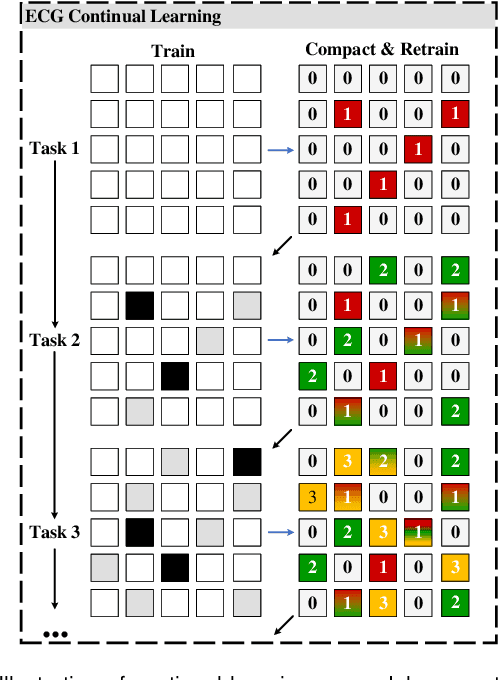
Abstract:Electrocardiogram (ECG) monitoring is one of the most powerful technique of cardiovascular disease (CVD) early identification, and the introduction of intelligent wearable ECG devices has enabled daily monitoring. However, due to the need for professional expertise in the ECGs interpretation, general public access has once again been restricted, prompting the need for the development of advanced diagnostic algorithms. Classic rule-based algorithms are now completely outperformed by deep learning based methods. But the advancement of smart diagnostic algorithms is hampered by issues like small dataset, inconsistent data labeling, inefficient use of local and global ECG information, memory and inference time consuming deployment of multiple models, and lack of information transfer between tasks. We propose a multi-resolution model that can sustain high-resolution low-level semantic information throughout, with the help of the development of low-resolution high-level semantic information, by capitalizing on both local morphological information and global rhythm information. From the perspective of effective data leverage and inter-task knowledge transfer, we develop a parameter isolation based ECG continual learning (ECG-CL) approach. We evaluated our model's performance on four open-access datasets by designing segmentation-to-classification for cross-domain incremental learning, minority-to-majority class for category incremental learning, and small-to-large sample for task incremental learning. Our approach is shown to successfully extract informative morphological and rhythmic features from ECG segmentation, leading to higher quality classification results. From the perspective of intelligent wearable applications, the possibility of a comprehensive ECG interpretation algorithm based on single-lead ECGs is also confirmed.
A Causal Intervention Scheme for Semantic Segmentation of Quasi-periodic Cardiovascular Signals
Sep 19, 2022



Abstract:Precise segmentation is a vital first step to analyze semantic information of cardiac cycle and capture anomaly with cardiovascular signals. However, in the field of deep semantic segmentation, inference is often unilaterally confounded by the individual attribute of data. Towards cardiovascular signals, quasi-periodicity is the essential characteristic to be learned, regarded as the synthesize of the attributes of morphology (Am) and rhythm (Ar). Our key insight is to suppress the over-dependence on Am or Ar while the generation process of deep representations. To address this issue, we establish a structural causal model as the foundation to customize the intervention approaches on Am and Ar, respectively. In this paper, we propose contrastive causal intervention (CCI) to form a novel training paradigm under a frame-level contrastive framework. The intervention can eliminate the implicit statistical bias brought by the single attribute and lead to more objective representations. We conduct comprehensive experiments with the controlled condition for QRS location and heart sound segmentation. The final results indicate that our approach can evidently improve the performance by up to 0.41% for QRS location and 2.73% for heart sound segmentation. The efficiency of the proposed method is generalized to multiple databases and noisy signals.
LoadCNN: A Efficient Green Deep Learning Model for Day-ahead Individual Resident Load Forecasting
Aug 01, 2019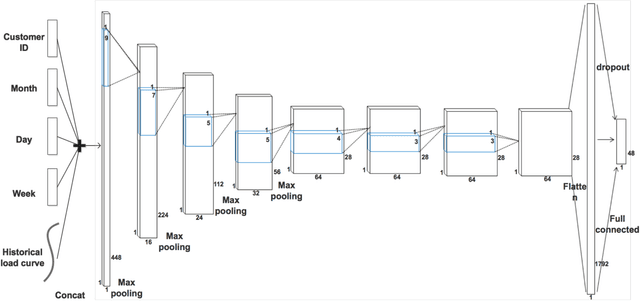
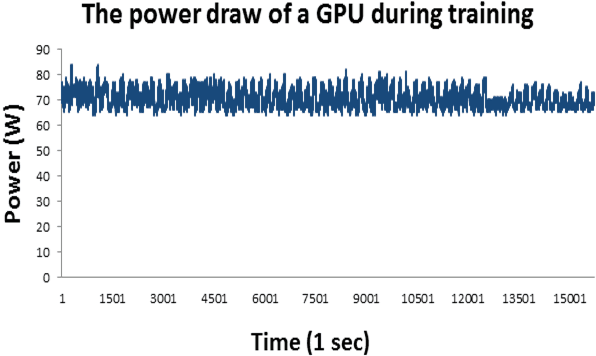
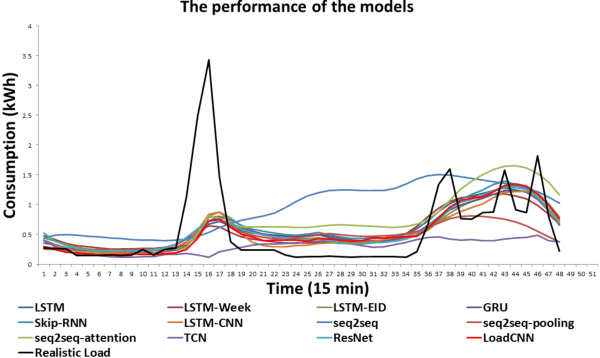
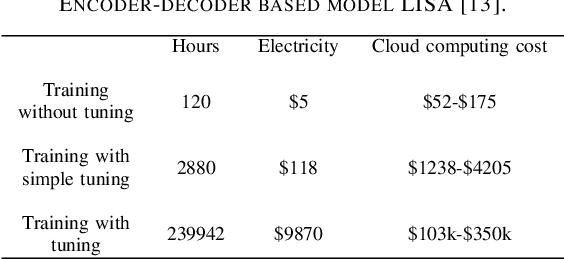
Abstract:Accurate day-ahead individual resident load forecasting is very important to various applications of smart grid. As a powerful machine learning technology, deep learning has shown great advantages in load forecasting task. However, deep learning is a computationally-hungry method, requires a plenty of training time and results in considerable energy consumed and a plenty of CO2 emitted. This aggravates the energy crisis and incurs a substantial cost to the environment. As a result, the deep learning methods are difficult to be popularized and applied in the real smart grid environment. In this paper, to reduce training time, energy consumed and CO2 emitted, we propose a efficient green model based on convolutional neural network, namely LoadCNN, for next-day load forecasting of individual resident. The training time, energy consumption, and CO2 emissions of LoadCNN are only approximately 1/70 of the corresponding indicators of other state-of-the-art models. Meanwhile, it achieves state-of-the-art performance in terms of prediction accuracy. LoadCNN is the first load forecasting model which simultaneously considers prediction accuracy, training time, energy efficiency and environment costs. It is a efficient green model that is able to be quickly, cost-effectively and environmental-friendly deployed in a realistic smart grid environment.
 Add to Chrome
Add to Chrome Add to Firefox
Add to Firefox Add to Edge
Add to Edge